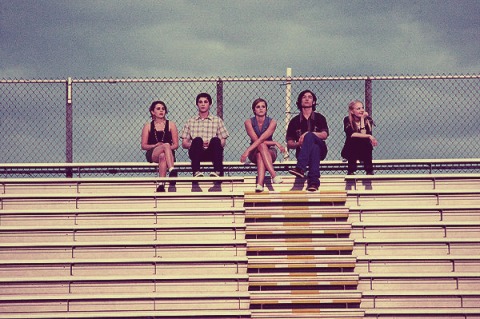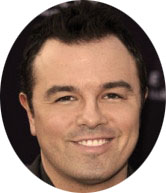The Hobbit reminded me a lot of the Dune TV miniseries – an adaptation that may be too faithful, too detailed for its own good. The way the High Frame Rate (HFR) makes everything look hypo-real, with sets looking like sets, and CG backdrops looking like obviously composited matte paintings, makes their aesthetics even more similar. Maybe Peter Jackson should’ve hired Vittorio Storaro as well. His philosophy of color couldn’t have hurt.
But honestly, the actual quality of the movie itself seems almost beside the point. As far as I was concerned, the real draw was getting to see a whole film in 48 frames per second, a.k.a. High Frame Rate or HFR.
The good news is you DO get used to the high frame rate. The bad news is, it takes practically the whole film for you to completely get used to it. The not-so-bad news is, you get used to it in phases. Getting used to HFR is actually like a study or self-realization in how the human brain perceives things and what your visual cortex pays the most attention to.
Getting twice as much visual information than it’s used to when in “watching a movie” mode, your brain initially gets thrown for a loop. Practically EVERYTHING looks kinda sped up, jerky and out of synch in the beginning. So your brain first adapts by anchoring itself onto what it can make the most sense of – the dialogue and its corresponding facial and mouth movements. This is what starts looking normal after a few minutes. Then your brain progresses to adjusting to the “look” of other normal and regular bodily movements like walking and sword fights. Other forms of motion take quite a bit longer to “normalize”. Camera movements such as zooms and pans all seem faster and more rushed than necessary in the movie’s first half or so, even if they’re probably the usual speed and length an editor would cut to. Fire, smoke and flowing water, all look rather “off” until almost the last few scenes.
In the scenes where 48fps DOES work, the results can be devastatingly realistic, as close to “you are there” as one can get in a cinema, even trumping IMAX at points. But there appear to be certain criteria required in a scene for HFR to be able to best work its magic. Well-lit scenes shot outdoors on location, from wide angles with slow pans, and the moving elements kept mostly to the midrange, is one such scenario. Busy, contrasty scenes, with multiple planes of depth, and multiple elements in motion, is another. It was kinda to be expected, but still rather surprising, at just how much slow-motion scenes look absolutely AWESOME in HFR. So you can’t help but think how it would’ve been a lot better if we’d all gotten a 48fps “introductory film” featuring all these HFR-friendly shots and compositions to train our visual cortex with, before tackling this rambling Tolkien adaptation.
I guess I should at least say that it all comes together in one standout slow-mo shot almost at the end when things just CLICK and you catch your breath and wonder why movies haven’t been in HFR until now. By that point you’re grateful that your eyes and brain have finally gotten used to how fire looks like in 48fps.
Scenes where HFR does NOT work that well, are most indoor scenes shot in tight angles. “You are there” shifts to “they are on a set” in these cases. Dimly lit scenes with a narrow range of colors and low contrast also mostly look so-so, unless filled with tons of set and costume detail with distinct elements to catch the eye. Otherwise, they can easily stray into this straight-to-video-sci-fi-B-film “look”. HFR also seems to be particularly unforgiving to CG visual effects. What may be impressive or acceptable in good old 24fps can look downright shoddy in 48fps, especially once things start moving.
HFR even seems to affect how acting is perceived. It doesn’t seem to favour loose, erratic movements and line delivery, while performances that are more nuanced and deliberate come off better.
I also can’t help but wonder if, rather than the novelty of 48 fps HFR, maybe the relatively cool and wan color palette and lighting scheme also contributed to the video-like look of some scenes, and also whether this was caused more by the particularities of the lenses and image sensors of the digital cameras used (the RED EPIC 4k, which has been said to be prone to desaturating colors), or the slight dimming and loss of focus caused by the 3D glasses. I really wish there was a 2D HFR version to check out as well.
With the tech overshadowing the technique, the style over the substance, Jackson has produced what is for all intents and purposes, an audience-proof movie. Hardcore fans and those hungry for the next big blockbuster will line up and swoon, while most critics will shrug and share ineffectual rants and raves. But HFR is something really new to mainstream cinema, going beyond even 3D or IMAX-size screens. Jackson is trying to fundamentally upgrade the way we watch movies, how we perceive simulated life itself, and I’m willing to cut him a lot of slack for that, even if I was never really a big fan of his to begin with.
Related articles
- Will “The Hobbit” Start A 48 FPS Movie Revolution? (fastcocreate.com)
- How 48FPS Will Wall Off Cinema History (badassdigest.com)
- Questioning The Hobbit’s faster frame rate technology (cbc.ca)
- ‘The Hobbit: An Unexpected Journey’ HFR 3D Review: Peter Jackson’s Latest Is Rousing Yet Repetitive (slashfilm.com)
- The Hobbit Could Send Movie Fans on Unexpected Journeys – or Start a Nerd War (wired.com)

 In last year’s Tree of Life, Terence Malick mesmerized audiences with his meditation on the nature of the universe and our passage through it. He encompassed the entirety of time from creation to the rapture, throwing in a bunch of dinosaurs for good measure, in order to weave a tapestry that shows the interconnectedness of life in all its infinite variations. Benh Zeitlin’s debut feature film touches on a lot of similar themes — nature, family, the harmony of life — and also uses a mixture of surrealist imagery, compressing memories, fables, dreams, folklore and imagination in order to achieve an acute, unique visual style. Instead of dinosaurs, he has “aurochs”, mythical beasts that once roamed the earth as a metaphor for our struggle to maintain our precarious control over the earth. But unlike the sprawling Malick film, Zeitlin tells a narrative with such amazing focus and precision of emotion. Beasts of the Southern Wild is a reminder of the power of cinema to transport its audiences physically and emotionally, it is escapism imbued with the highest form of artistry.
In last year’s Tree of Life, Terence Malick mesmerized audiences with his meditation on the nature of the universe and our passage through it. He encompassed the entirety of time from creation to the rapture, throwing in a bunch of dinosaurs for good measure, in order to weave a tapestry that shows the interconnectedness of life in all its infinite variations. Benh Zeitlin’s debut feature film touches on a lot of similar themes — nature, family, the harmony of life — and also uses a mixture of surrealist imagery, compressing memories, fables, dreams, folklore and imagination in order to achieve an acute, unique visual style. Instead of dinosaurs, he has “aurochs”, mythical beasts that once roamed the earth as a metaphor for our struggle to maintain our precarious control over the earth. But unlike the sprawling Malick film, Zeitlin tells a narrative with such amazing focus and precision of emotion. Beasts of the Southern Wild is a reminder of the power of cinema to transport its audiences physically and emotionally, it is escapism imbued with the highest form of artistry.






 4bia (Thailand – 2008)
4bia (Thailand – 2008)






 Anne Hathaway (Les Miserables)
Anne Hathaway (Les Miserables)

